A wobbly toilet refers to a toilet that is not properly secured to the bathroom floor, causing it to rock or move when in use.
This can be due to a variety of reasons, including loose bolts, a damaged wax ring, an unleveled floor, or a cracked toilet bowl. Fixing a wobbly toilet requires identifying the underlying cause and taking appropriate steps to stabilize the toilet and prevent further damage.
How to Fix a Wobbly Toilet
| Step | Task | Description |
|---|---|---|
| 1 | Inspect | Check the toilet bolts, wax ring, and flange for any damage, misalignment, or wear. Also, inspect the flooring around the toilet for any soft spots, cracks, or unevenness. |
| 2 | Tighten bolts | If the toilet bolts are loose, use a wrench to tighten them evenly, being careful not to overtighten and crack the toilet base. |
| 3 | Replace wax ring | If the wax ring is damaged or worn out, remove the toilet, scrape off the old wax ring, and install a new one before reassembling the toilet. |
| 4 | Level toilet | Ensure that the toilet bowl is level from all sides by placing a level on top of the bowl. Use plastic or rubber shims if needed to level the toilet and prevent wobbling. |
| 5 | Reinstall toilet | Carefully lower the toilet back onto the floor, making sure that the bolts pass through the holes on the base of the toilet. Apply even pressure to compress the wax ring and create a tight seal. Then, reattach and tighten the nuts onto the bolts securely, avoiding over-tightening. |
| 6 | Reconnect water supply | Reconnect the water supply line to the bottom of the toilet tank and turn on the water supply. Check for any leaks around the base of the toilet and make sure the toilet is functioning properly. |
| 7 | Troubleshooting | If the toilet is still wobbly, check the flange for damage or misalignment, inspect the flooring for unevenness, use shims if needed, or seek professional help from a plumber. |
| 8 | Maintenance | Regularly check the toilet for stability during routine maintenance and promptly address any signs of wobbling or movement to prevent further damage. |
One of our articles –Tiny Air Bubbles In Toilet Bowl.
Common Causes
Before diving into the steps to fix a wobbly toilet, it’s essential to understand the common causes that can lead to this problem. By identifying the root cause, you can take appropriate measures to fix the issue effectively.
Loose bolts
One of the common reasons for a wobbly toilet is loose bolts that connect the toilet to the floor. Over time, these bolts can become loose due to regular usage or improper installation, causing the toilet to become unstable.
Damaged wax ring
The wax ring is a seal that sits between the toilet base and the floor drain, creating a watertight connection. If the wax ring is damaged or deteriorated, it can result in a wobbly toilet as it fails to provide adequate support to the toilet.
Unleveled floor
If the floor underneath the toilet is not level, it can also cause the toilet to wobble. This can be due to an uneven subfloor or improper installation during the initial toilet installation.
Cracked toilet bowl
A cracked toilet bowl can also be a cause of a wobbly toilet. A crack in the toilet bowl can weaken the overall structure of the toilet, making it unstable.
Tools and Materials
To fix a wobbly toilet, you will need the following tools and materials:
- Wrench
- Wax ring
- Shims
- Level
Make sure to gather all the necessary tools and materials before starting the repair process.
Step 1: Turn off the water supply
Before fixing a wobbly toilet, it’s crucial to turn off the water supply to prevent any potential leaks or water damage. Locate the water valve near the base of the toilet and turn it clockwise to shut off the water supply.
Step 2: Inspect and tighten the bolts
Once the water supply is turned off, carefully inspect the bolts that connect the toilet to the floor. These bolts are usually located at the base of the toilet and can be covered by plastic caps or decorative covers. Use a wrench to check if the bolts are loose.
If you find that the bolts are loose, use the wrench to tighten them. Make sure to tighten them evenly on both sides to ensure that the toilet is securely attached to the floor. Avoid over-tightening, as it can damage the toilet or the floor.
One of our articles –How to avoid skid marks in the toilet?
Step 3: Replace the wax ring
If the bolts are tight and the toilet is still wobbly, the next step is to replace the wax ring. The wax ring is a seal that provides a watertight connection between the toilet and the floor drain. Over time, it can become damaged or deteriorated, leading to a wobbly toilet.
To replace the wax ring, you will need to remove the toilet. Start by disconnecting the water supply line from the bottom of the toilet tank. Then, carefully remove the nuts from the bolts that connect the toilet to the floor. Once the nuts are removed, lift the toilet straight up to detach it from the floor.
Next, remove the old wax ring from the toilet base and the floor drain. Clean any residue or debris from the floor drain to ensure a clean surface for the new wax ring. Then, place the new wax ring onto the floor drain, aligning it with the bolt holes.
Lower the toilet back onto the wax ring, making sure that the bolts pass through the holes on the base of the toilet. Apply even pressure on the toilet to compress the wax ring and create a tight seal. Finally, reattach the nuts onto the bolts and tighten them securely.
Step 4: Check and adjust the toilet level
After replacing the wax ring, it’s important to check and adjust the level of the toilet to ensure that it is stable and even. Use a level to check if the toilet is balanced from side to side and front to back.
If the toilet is not level, you can use shims to adjust it. Shims are small pieces of material that can be placed under the toilet base to level it. Start by inserting shims under the low side of the toilet until it is level.
Once the toilet is level, carefully trim off the excess shims with a utility knife to ensure a clean and stable installation. Avoid using excessive force when trimming the shims to prevent damaging the toilet or the floor.
Step 5: Inspect for cracks
Another possible cause of a wobbly toilet is a cracked toilet bowl. Inspect the toilet bowl thoroughly for any visible cracks or damages. Cracks can weaken the structure of the toilet, making it unstable and prone to further damage.
If you find any cracks in the toilet bowl, it’s important to replace the toilet as soon as possible. Cracks cannot be repaired and can worsen over time, leading to leaks or complete toilet failure. Replace the toilet with a new one to ensure a stable and secure fixture.
Step 6: Reinstall the toilet
Once you have tightened the bolts, replaced the wax ring, and leveled the toilet, it’s time to reinstall it. Carefully lower the toilet back onto the floor, making sure that the bolts pass through the holes on the base of the toilet.
Apply even pressure on the toilet to compress the wax ring and create a tight seal. Then, reattach the nuts onto the bolts and tighten them securely. Avoid over-tightening, as it can damage the toilet or the floor.
Finally, reconnect the water supply line to the bottom of the toilet tank and turn on the water supply. Check for any
leaks around the base of the toilet and at the water supply connection. If there are no leaks and the toilet is securely in place, flush the toilet and observe if it refills properly and flushes without any issues.
Step 7: Test for stability
Once the toilet is reinstalled and connected to the water supply, test its stability. Gently rock the toilet from side to side and front to back to check for any wobbling or movement. If the toilet feels stable and secure, then the repair has been successful.
If you still notice any wobbling or movement, double-check that the bolts are tightened securely, the wax ring is properly compressed, and the toilet is level. If everything seems to be in order and the toilet is still unstable, you may need to consult a professional plumber for further inspection and repair.
Step 8: Reassemble and clean up
After confirming that the toilet is stable and secure, reassemble any parts that were removed during the repair process, such as the toilet tank lid, toilet seat, and any decorative covers or caps. Tighten them securely but be careful not to overtighten and damage the fixtures.
Clean up the work area, removing any debris or tools used during the repair process. Wipe down the toilet and surrounding area with a clean cloth to remove any dirt or residue. Turn on the water supply to the toilet and flush it again to ensure proper operation.
Congratulations! You have successfully repaired a wobbly toilet. Regularly check the bolts, wax ring, and toilet bowl for any signs of damage or wear to prevent future issues. If you encounter any difficulties or are not comfortable with DIY repairs, it’s always best to consult a professional plumber for assistance.
Troubleshooting
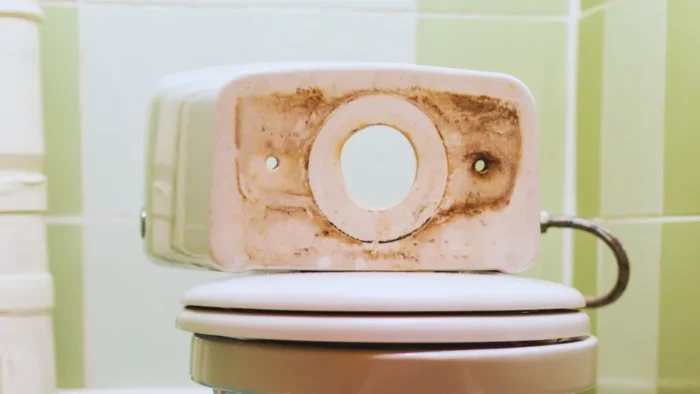
If you’re still experiencing issues with a wobbly toilet even after following the steps mentioned above, here are some additional troubleshooting tips that may help:
- Check the flange: The flange is the circular piece that connects the toilet to the floor and helps to create a watertight seal. If the flange is damaged or not properly installed, it can cause the toilet to wobble. Inspect the flange for any cracks, corrosion, or misalignment. If necessary, repair or replace the flange before reassembling the toilet.
- Check the floor: Uneven or damaged flooring underneath the toilet can also cause it to wobble. Inspect the floor around the toilet for any soft spots, cracks, or unevenness. If needed, repair or replace the flooring to create a stable base for the toilet.
- Use shims: If the toilet is still slightly wobbly even after ensuring that the bolts, wax ring, flange, and flooring are all in good condition, you can use shims to stabilize it. Place plastic or rubber shims under the toilet base to level it and prevent wobbling. Be careful not to overtighten the bolts when using shims, as it can crack the toilet base.
- Seek professional help: If you’re not confident in your DIY skills or if the wobbly toilet issue persists despite troubleshooting, it’s best to consult a professional plumber for further inspection and repair. A plumber will have the expertise and tools to identify and fix any underlying issues that may be causing the toilet to wobble.
One of our articles –How To Remove Urine Stain Around Base of Toilet?
FAQs (Frequently Asked Questions)
Can I fix a wobbly toilet myself?
Yes, you can fix a wobbly toilet yourself by following the steps mentioned in this article. However, if you’re not comfortable with DIY repairs or if the issue persists, it’s best to consult a professional plumber for assistance.
How do I know if my toilet wax ring needs to be replaced?
If you notice water leaking from the base of the toilet, or if the toilet wobbles even after tightening the bolts, it may indicate a damaged wax ring that needs to be replaced.
Can uneven flooring cause a toilet to wobble?
Yes, uneven or damaged flooring underneath the toilet can cause it to wobble. It’s important to inspect the flooring and repair or replace it if needed to create a stable base for the toilet.
Can I use regular shims to stabilize a wobbly toilet?
It’s best to use plastic or rubber shims specifically designed for toilets to avoid damaging the toilet base. Regular shims may not be suitable as they can crack the toilet.
How often should I check my toilet for stability?
It’s a good practice to check your toilet for stability during regular maintenance routines, such as cleaning or replacing the wax ring. Additionally, if you notice any signs of wobbling or movement, it’s important to address the issue promptly to prevent further damage.




![How to Remove Crystallized Urine [Explained]](https://homepander.com/wp-content/uploads/2022/02/How-To-Remove-Crystallized-Urine.jpg)


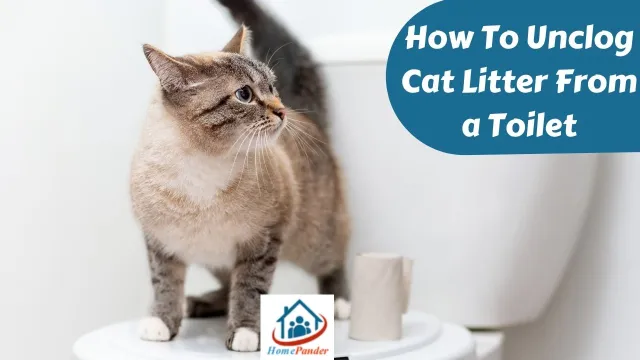
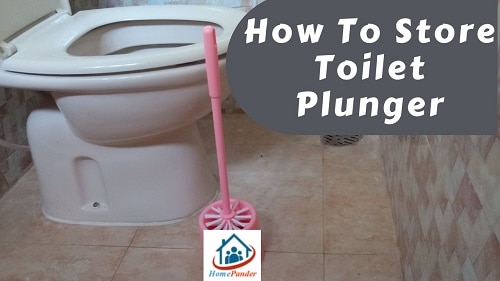
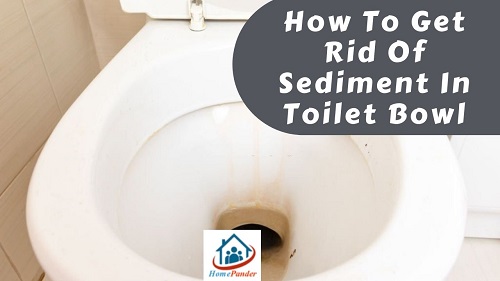
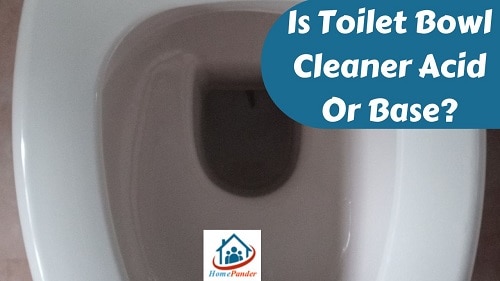
![How To Clean Dark Grout That Has Turned White [5 Easy Ways]](https://homepander.com/wp-content/uploads/2021/12/How-To-Clean-Dark-Grout-That-Has-Turned-White.webp)